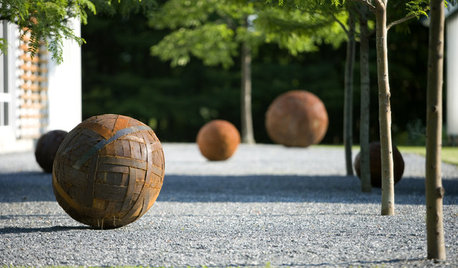How do you know what kind of shade you have?By tree type soil etc
flowersandthings
19 years ago
Related Stories

GARDENING GUIDESHow to Pick a Mulch — and Why Your Soil Wants It
There's more to topdressing than shredded wood. Learn about mulch types, costs and design considerations here
Full Story
GARDENING GUIDESHow to Stop Worrying and Start Loving Clay Soil
Clay has many more benefits than you might imagine
Full Story
GARDENING GUIDESGardening Solutions for Heavy Clay Soils
What’s a gardener to do with soil that’s easily compacted and has poor drainage? Find out here
Full Story
GARDENING GUIDESHave Acidic Soil in Your Yard? Learn to Love Gardening Anyway
Look to acid-loving plants, like conifers and rhododendrons, to help your low-pH garden thrive
Full Story
LANDSCAPE DESIGN7 Great Trees for Summer Shade and Fall Color
These landscape-pro faves straddle the seasons beautifully. Could one enhance your own yard?
Full Story
GARDENING GUIDESInvite Cellophane Bees to Your Garden by Providing Patches of Bare Soil
Look for cellophane bees (Colletes) pollinating flowering trees and shrubs in U.S. gardens this spring
Full Story
LANDSCAPE DESIGNWhat Kind of Gardener Are You? Find Your Archetype
Pick from our descriptions to create a garden that matches your personality and tells your story
Full Story
FARM YOUR YARDHouzz Call: Show Us Your One-of-a-Kind Chicken Coops
Do you have a fun or stylish backyard shelter for your feathered friends? Post your pictures and stories in the Comments!
Full Story
WORKING WITH PROSWhat Do Landscape Architects Do?
There are many misconceptions about what landscape architects do. Learn what they bring to a project
Full Story
COLORHave You Heard the Hues? 15 Colors You May Not Know About
Name-drop these shades at holiday parties — or better, try one on your walls — and expand your palette possibilities
Full StorySponsored
Professional Remodelers in Franklin County Specializing Kitchen & Bath






vetivert8
flowersandthingsOriginal Author
Related Professionals
Simpsonville Landscape Architects & Landscape Designers · Surprise Landscape Contractors · Beverly Hills Landscape Contractors · Boca Raton Landscape Contractors · Brooklyn Park Landscape Contractors · Danvers Landscape Contractors · Del Aire Landscape Contractors · Dixon Landscape Contractors · Kearny Landscape Contractors · La Vista Landscape Contractors · New Baltimore Landscape Contractors · Norristown Landscape Contractors · San Pedro Landscape Contractors · Southbury Landscape Contractors · Tewksbury Landscape Contractorsgardengal48 (PNW Z8/9)